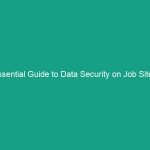Introduction
In today’s digital age, the importance of Health, Safety, and Environment (HSE) cannot be overstated. Workplace Safety has transcended traditional boundaries, extending into the realm of social media. As professionals increasingly turn to social media platforms for networking, branding, and sharing knowledge, understanding the safe use of social media for professionals becomes crucial. This article aims to provide essential guidelines on how to navigate social media safely while maintaining professionalism and protecting one’s reputation.
Understanding the Regulatory Frameworks
Before delving into Best Practices, it’s vital to understand the regulatory frameworks that govern the use of social media in professional settings. These frameworks can vary significantly depending on the industry and geographical location.
Data Protection Regulations
One of the primary concerns regarding social media usage is data protection. Regulations such as the General Data Protection Regulation (GDPR) in Europe impose strict guidelines on how personal data is collected, used, and shared. Professionals must ensure that they do not inadvertently share sensitive information that could violate these regulations.
Industry-Specific Guidelines
Different industries have varying Standards and practices regarding social media use. For instance, healthcare professionals must adhere to HIPAA regulations in the United States, which restrict the sharing of patient information. Understanding these guidelines is essential for the safe use of social media for professionals.
Best Practices for Social Media Engagement
Implementing Best Practices can significantly enhance the safe use of social media for professionals. Here are several strategies to consider:
Establishing Clear Social Media Policies
Organizations should develop clear social media policies that outline acceptable behavior and guidelines for employees. These policies should cover aspects such as the type of content that can be shared, the tone of communication, and the consequences of policy violations. By having a solid framework in place, employees will be more informed about their responsibilities when engaging on social media.
Training and Awareness Programs
Regular Training sessions can help employees understand the implications of their online presence. Awareness programs should focus on the potential risks associated with social media, such as cyberbullying, misinformation, and reputational damage. By educating professionals, organizations can foster a culture of responsible social media use.
Encouraging Professional Branding
Professionals should be encouraged to build a strong personal brand on social media. This includes maintaining a consistent profile across platforms, sharing relevant industry content, and engaging with others in a meaningful way. A well-crafted professional image not only enhances personal credibility but also reflects positively on the organization they represent.
Case Studies: Successes and Failures
Examining real-world examples can provide valuable insights into the safe use of social media for professionals. Here are two case studies that highlight both successful and problematic scenarios:
Success Story: The Use of Twitter for Crisis Communication
During a natural disaster, a local government agency effectively utilized Twitter to communicate essential information to the public. By providing real-time updates and Safety instructions, they not only kept the community informed but also strengthened their reputation as a reliable source of information. This example demonstrates how social media, when used responsibly, can enhance Public Safety and trust.
Failure Story: A Misguided Tweet
In contrast, a prominent company faced backlash after an employee tweeted an offensive joke. The tweet went viral, leading to a public relations crisis and significant reputational damage for the organization. This incident underscores the need for professionals to think critically about the content they share on social media and the potential consequences of their actions.
Challenges in the Safe Use of Social Media
While there are numerous Benefits to using social media, several challenges can hinder the safe use of social media for professionals. Understanding these challenges is essential for mitigating risks.
Cybersecurity Threats
Cybersecurity remains one of the most significant challenges in social media use. Professionals are often targets for phishing attacks, where malicious actors attempt to obtain sensitive information. Organizations should implement robust cybersecurity measures, including Two-Factor Authentication and regular security audits, to protect their employees and sensitive data.
Reputational Risks
One misstep on social media can lead to long-lasting reputational damage. Professionals must be vigilant about their online presence and the information they share. This includes being mindful of the images, comments, and posts associated with their profiles. Regularly reviewing one’s digital footprint can help identify and address potential issues before they escalate.
Time Management Concerns
With the plethora of platforms available, managing time effectively on social media can be a challenge. Professionals may find themselves spending excessive amounts of time on social media, which can detract from their productivity. Setting specific time limits for social media engagement and using scheduling tools can help strike a balance between online presence and professional responsibilities.
Future Trends in Social Media and HSE
As technology continues to evolve, so do the trends surrounding the safe use of social media for professionals. Keeping an eye on these trends can help organizations prepare for the future.
Increased Focus on Privacy
With growing concerns about data privacy, social media platforms are likely to implement stricter privacy measures. Professionals should stay informed about these changes and adjust their online practices accordingly to ensure compliance and safeguard their personal information.
Integration of Artificial Intelligence
Artificial intelligence (AI) is transforming the way social media is used. From chatbots that engage users to algorithms that curate content, AI will play a significant role in the future of social media. Professionals should embrace these technologies while also being aware of the implications for privacy and security.
Emergence of New Platforms
As new social media platforms emerge, professionals must adapt their strategies to engage effectively. Each platform has unique features and user demographics, necessitating tailored approaches for content sharing and interaction. Staying current with these trends will ensure continued success in professional networking.
Conclusion
In conclusion, the safe use of social media for professionals is a multifaceted issue that requires a comprehensive understanding of various guidelines and best practices. By implementing effective policies, engaging in continuous training, and staying informed about industry trends, professionals can navigate the digital landscape safely and responsibly. Remember, your online presence is a reflection of your professional identity. Embrace these guidelines to enhance your safety, protect your reputation, and foster a positive digital environment. If you have any questions or need assistance in developing social media policies for your organization, don’t hesitate to reach out for support.


